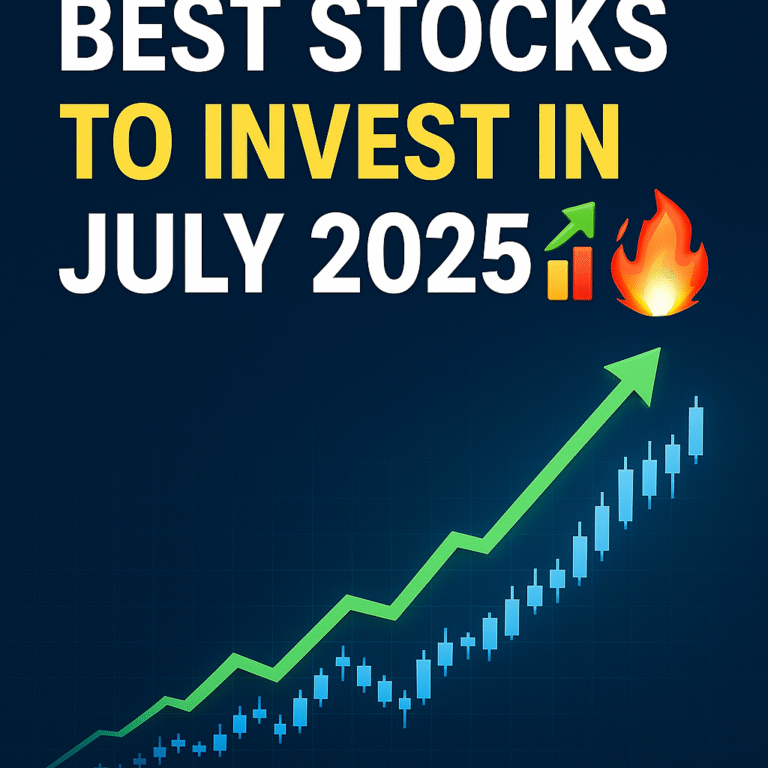Introduction:
Investing in the stock market can be life-changing 💸—but only if you choose your stocks wisely. Whether you’re a beginner or someone with little experience, knowing what to look for in a stock before you invest is crucial. Let’s break it down step by step. ✅
🧠 1. Understand the Business
Before anything else, ask: “Do I understand what this company does?”
- Invest only in businesses you can explain in simple words.
- Avoid complex companies you don’t understand (even if they look profitable).
- Example: Apple = makes iPhones and electronics. Easy ✅
💰 2. Check Revenue and Profit Growth
A growing company usually means a growing stock.
- 📊 Look at the company’s past 5-year revenue trend.
- 📈 Check for consistent profit growth.
- Red Flag 🚩: If profits are declining year over year.
🔍 3. Examine the PE Ratio (Price-to-Earnings)
The P/E ratio shows how much investors are willing to pay for ₹1 of the company’s earnings.
- Lower PE can mean undervalued 🟢
- High PE might mean overvalued or high growth expectations 🔴
➡ Compare with industry peers for better insights.
📉 4. Analyze the Debt Level
Too much debt = risky business.
- Check Debt-to-Equity ratio (D/E ratio).
- Lower than 1 is generally safe.
- High debt + low profit = danger zone ❌
📦 5. Study the Product or Service
Ask yourself:
- Is the product/service in demand?
- Is it a necessity or just a trend?
- Will people still use this 10 years from now?
A timeless product = long-term potential 🕰️
👔 6. Look at the Management Quality
Good companies need good leaders.
- Check CEO and management background.
- See how they’ve handled crisis or growth.
- Transparency and long-term vision matter a lot.
💹 7. Dividends and Payout History
Want steady income? Look at dividend-paying stocks 🤑
- Check past dividend yield.
- Regular dividends = financially strong company.
- Ideal for long-term and retirement investors.
🌍 8. Industry Trends and Competitors
Don’t invest in isolation.
- Understand the sector performance (Tech, Pharma, FMCG, etc.).
- Who are the company’s top competitors?
- Is the industry growing or declining?
📈 9. Technical Indicators (For Active Investors)
If you’re a trader or short-term investor:
- Look at moving averages, RSI, MACD.
- Identify patterns and support/resistance levels.
- Not for long-term investing—but great for timing entry points.
🛡️ 10. Risk Factors and Red Flags
Always check for:
- Ongoing lawsuits or fraud cases ⚖️
- Frequent management changes 🔄
- Falling market share 📉
One red flag doesn’t always mean “No,” but many together are a clear warning 🚫
✅ Final Checklist Before Investing
| Factor | Status |
|---|---|
| Business Easy to Understand | ✅/❌ |
| Revenue & Profit Growing | ✅/❌ |
| PE Ratio Reasonable | ✅/❌ |
| Debt Under Control | ✅/❌ |
| Trusted Management | ✅/❌ |
| Industry Trend Positive | ✅/❌ |
| Red Flags Found? | ❌ = Good |
✨ Conclusion
Investing smartly means doing your homework before buying a stock. It’s not just about chasing the “hot stock of the month” 📉. Look for solid businesses with strong fundamentals, low debt, and honest leadership. Be patient and invest long-term for real wealth-building 🚀.
📌 Pro Tip
Never invest money you can’t afford to lose. Always diversify your portfolio and stay consistent. 📊






